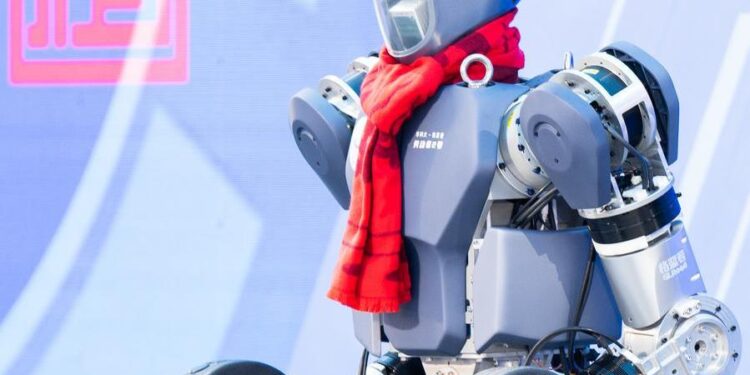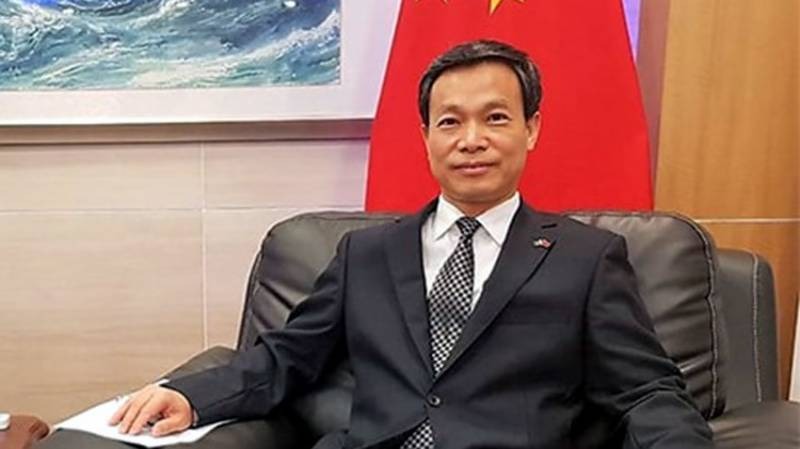Chinese Spring Festival events widely adopted AI Technology showcasing China’s fusion of AI and cultural heritage.
At the 2025 Intangible Cultural Heritage Gala, aired by China Media Group on January 31, ten robot dogs performed an impeccably synchronized dance routine to a traditional song. Their seamless movements, including leaps, spins, and waves, captivated audiences and quickly became a social media sensation.
Viewers marveled at the innovative fusion of cultural heritage and modern robotics, with many praising the robot dogs as “the most dedicated dance crew.” The performance highlighted how technology is reshaping traditional entertainment.
The robotic dancers, Lite3 models from Hangzhou-based DEEP Robotics, are part of an advanced intelligent robot dog series. With a payload capacity of 7.5 kg, an operational range of 5 km, and 1.5-2 hours of continuous movement, these robots can execute complex maneuvers like high jumps and front flips.
Lin Yi, R&D manager at DEEP Robotics, explained that their proprietary joint modules, control systems, and sophisticated algorithms enable highly dynamic movement. Users can train the robots further using AI-driven deep learning and reinforcement learning techniques.
Artificial intelligence (AI) is becoming more integrated into daily life in China, transforming both entertainment and household experiences. This was evident at the recent Spring Festival Gala, where humanoid robots dressed in vibrant outfits performed the Yangko folk dance alongside human dancers. The performance ended with a touching moment as a “robot grandmother” was gracefully guided offstage, which quickly went viral.
Beyond entertainment, AI is enhancing various aspects of everyday life. At temple fairs and tourist spots, AI-powered assistants are also replacing human servers, crafting candy figurines, facilitating games, carrying loads, making deliveries, and even aiding climbers.
Moreover, this year’s Spring Festival saw an explosion of AI-driven innovations, exciting the public and fueling social media discussions. Users eagerly shared their experiences, showcasing AI’s growing role in celebrations and daily activities.
One such example is AI-generated digital greeting cards. A tech worker surnamed Li used the Baidu App to create a festive image featuring “firecrackers on Mars” and a “dragon dance on the Forbidden City rooftop” within minutes, replacing traditional New Year greetings.
AI’s mainstream success in China is driven by its practical applications and rapid technological advancements. According to Baidu Chairman and CEO Robin Li, the true measure of AI’s success lies in its impact on everyday users, rather than just computing power in research labs. Integrating AI into daily life ensures that cutting-edge technology becomes widely accessible.
Additionally, China’s AI ecosystem spans key areas like chips, algorithms, data, platforms, and applications. With over 4,500 companies involved, the core AI industry is valued at nearly 600 billion yuan ($82.1 billion). In the past year alone, 238 new generative AI products have been registered.
Demand for large AI models is surging. By February 2, DeepSeek topped app charts in 140 regions, exceeding 30 million daily active users. Baidu’s ERNIE had over 1.5 billion daily calls by November 2024, a 30-fold increase, while ByteDance’s Doubao saw a 33-fold rise in daily token usage since its launch in May 2024.
Moreover, Omdia, a tech consultancy, predicts that China’s generative AI market will grow 5.5 times by 2029, reaching $9.8 billion. DeepSeek’s rapid expansion is driving the AI ecosystem forward, with major cloud service providers like Huawei Cloud, Tencent Cloud, Alibaba Cloud, and Baidu AI Cloud integrating its large models into their platforms.
Related Posts

















